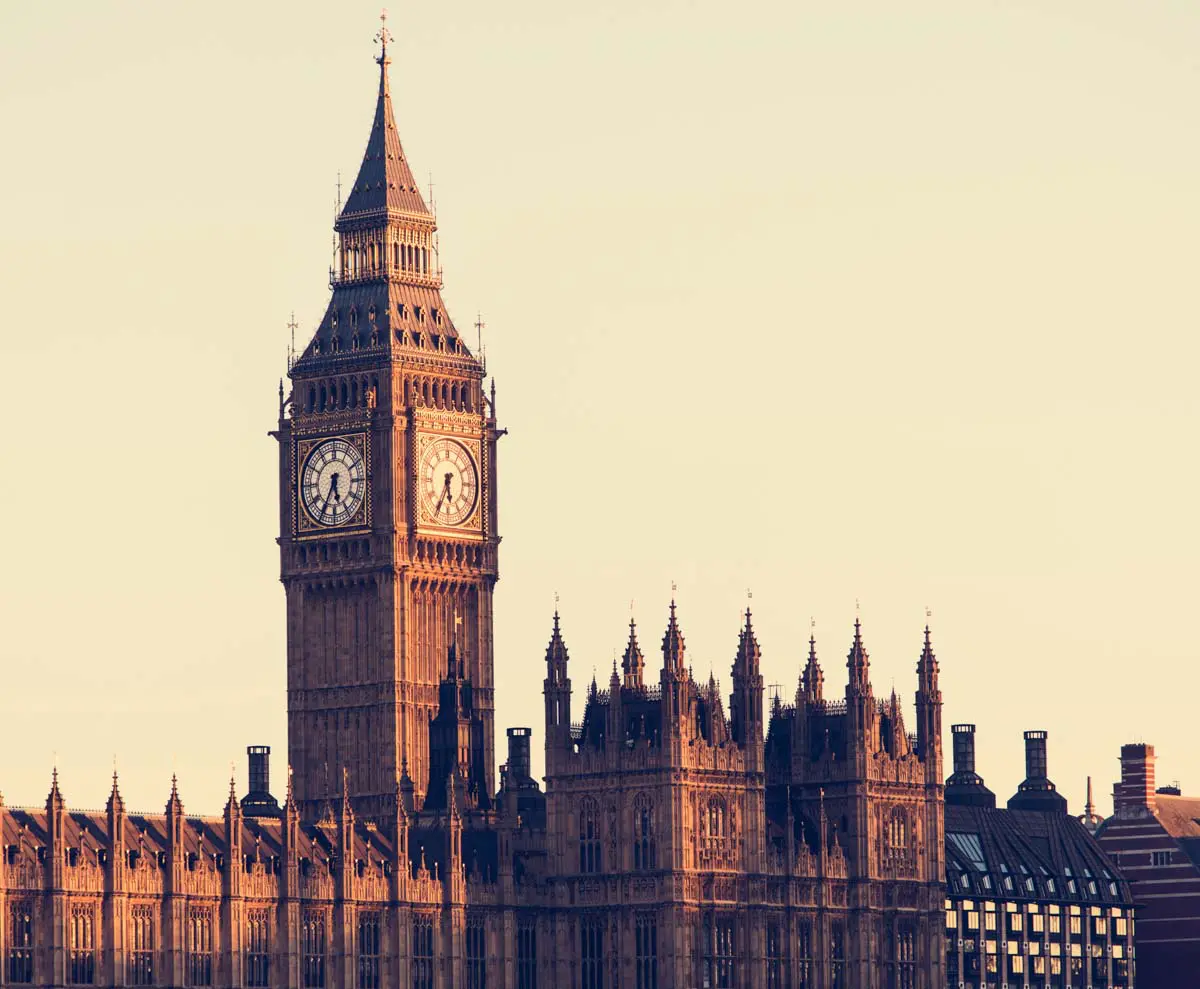How many Big Ben facts do you know?
If you’re any kind of Anglophile, or a Londoner yourself, you’ll know what the Houses of Parliament’s clock tower looks like, and you will probably have heard it chime too. What else is there?
Well, how about Big Ben’s history, and how Big Ben got its name? And that’s just for starters.
Read on for 25 fun facts about Big Ben, including a few juicy snippets on the landmark’s ongoing renovation.
Interesting Facts About Big Ben
It’s Actually Called Elizabeth Tower
The tower itself is Elizabeth Tower, and it’s the huge bell inside that’s called Big Ben. Why Big Ben? Well, it’s really big! In fact, the bell of Big Ben weighs over 13 tonnes.
It was only in 2012 that the tower was given its current name, as an honour to Queen Elizabeth on her jubilee.
What was the tower called before the new name? It was very imaginatively named Clock Tower. Big Ben’s clock faces are called The Big Clock, which is just as thoughtful. Not.
We’re not Sure how Big Ben got its Nickname
One of the first questions many people ask about London’s famous clock is, ‘how did Big Ben get its name?’
The thing is, no one is quite sure. However, you might get one of two answers. Either could be true.
The first theory is that the bell (and now the whole clock, usually) was nicknamed ‘Big Ben’ after Sir Benjamin Hall, the first Director of Works. He was a large man, and known around the house as Big Ben.
The second suggests that the clock was named after a heavyweight boxer, champion at the time the tower and clock were built, Benjamin Caunt. He was also nicknamed Big Ben.
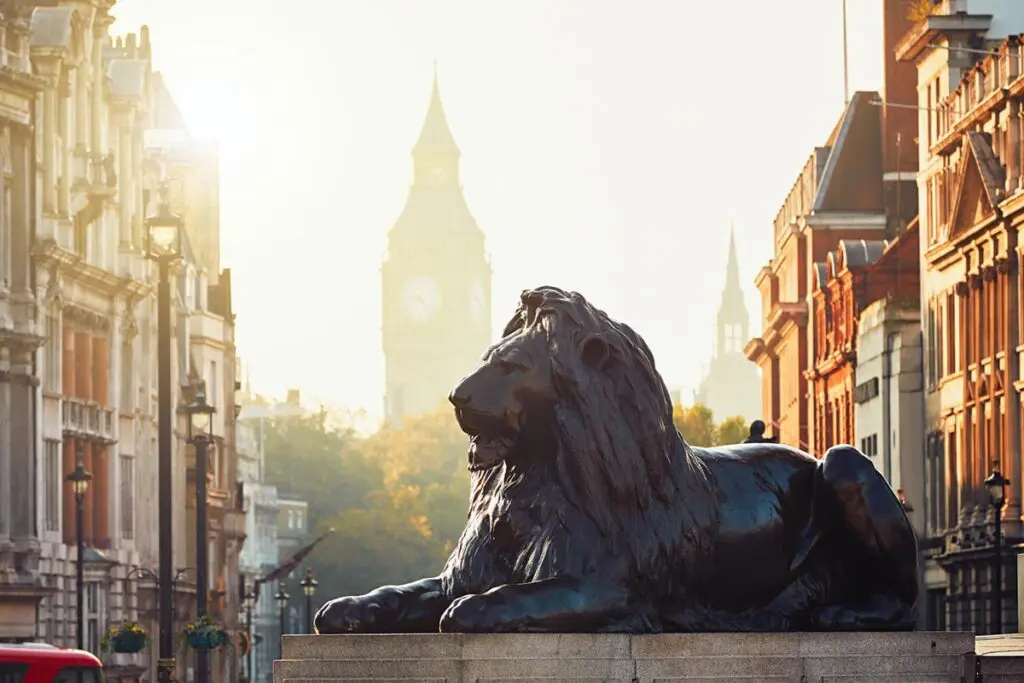
Big Ben’s Tower Leans Sideways
Don’t worry, the tower leans at an inclination of just 1/250 or 0.4 degrees. It’s not about to topple over, but if you look carefully when you’re standing close to Big Ben you should be able to see it tilt to one side.
Big Ben has Always Been Important
In fact, the bell was seen as so important that when it arrived in London it was brought down the Thames in a barge as Londoners flocked to watch. Then, it was taken across Westminster Bridge in a carriage drawn by sixteen white horses. That’s a lot of ceremony for a bell!
Big Ben is Really, Really Accurate
In fact, the clock is accurate to within two seconds every two weeks.
Of course, in order to keep Big Ben’s chimes sounding at just the right moment the clock has to be adjusted and wound.
Winding takes over an hour, and someone has to wind the clock three times a week. On top of that, the pendulum is adjusted by adding old pennies (from before decimalisation). Each penny causes Big Ben to gain 0.4 seconds.
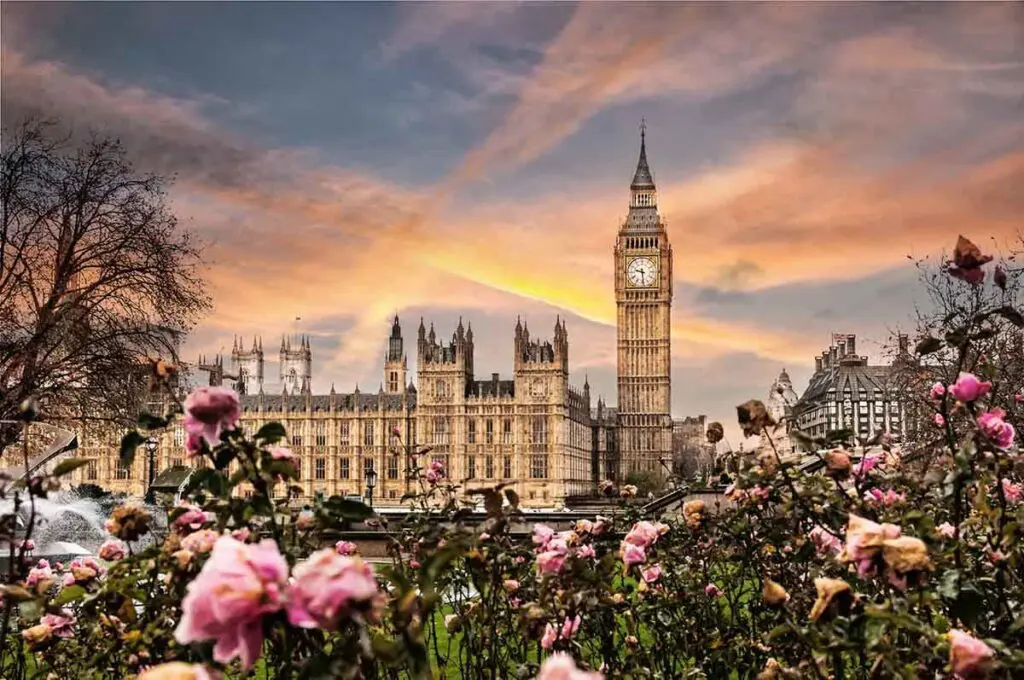
Big Ben has a long history
How old is Big Ben? Well, old enough to have been standing through the reigns of seven monarchs. That takes us right back to Queen Victoria, who was queen from 1837-1901.
But Big Ben facts and history go back even further than that. The tower we now know as the Elizabeth Tower was not the first clock on the site. Far from it in fact.
The first clock tower reported having been built where Westminster now stands was constructed in the 1290s. The first that we have records of was built in the 1360s, and was the first public chiming clock in England.
There were plenty more ups and downs at Westminster, including a fire, but ultimately Big Ben’s clock face began ticking in 1859.
Big Ben’s Face Went Dark in 1939
Of course our interesting facts about Big Ben had to include some wartime drama!
During WWII, the face of Big Ben’s clock was dimmed in compliance with blackout rules. With the whole of London dark, the glowing face would have been an easy target.
It Also Narrowly Avoided Being Bombed
Having a dimmed clockface didn’t stop Big Ben from nearly taking a hit though. At one point during WWII, a German bomber dropped a bomb on The House of Commons right next door. The building was destroyed along with the roof of Westminster Hall. Through all the chaos of putting out the blaze (and the explosions themselves) Big Ben kept ticking – that’s one tough tower.
In 1940, Big Ben Began Observing the Silent Minute
As a way to help Britons contemplate the terror and sadness of war, the BBC introduced the silent minute in 1940.
This was a minute before the 9 o’clock news during which everyone listening to the radio was asked to quietly contemplate the sacrifices of soldiers on the battlefields of Europe.
During this minute, Big Ben stayed silent and contemplative itself, to encourage Londoners to do the same.
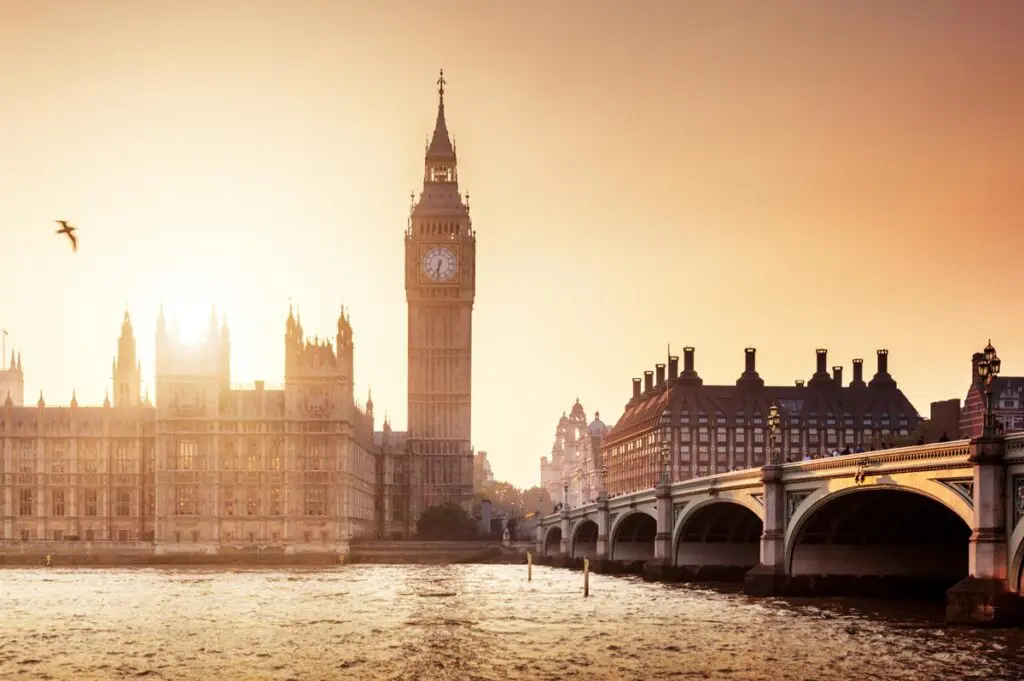
The Clock Tower Was Almost Destroyed During The Blitz
Despite the clock being darkened, enemy planes found the Houses of Parliament.
In May 1941, the Commons Chamber at Westminster was destroyed by incendiary bombs. Luckily, though, Big Ben and its clock tower were undamaged. In fact, Big Ben was chiming as usual all through the bombing and the rebuilding of the Commons Chamber.
Big Ben has its own Latin Motto
Here’s one for your Big Ben fact file. There’s a Latin saying beneath Big Ben’s clock face. It reads, OMINE SALVAM FAC REGINAM NOSTRAM VICTORIAM PRIMAM, and translated that means, ‘O Lord, keep safe our Queen Victoria the First’.
This motto isn’t updated for new monarchs, as it is part of Big Ben’s history.
The Light Above Big Ben is Important
Known as the Ayrton light, the green lantern above Big Ben shines whenever parliament is in session.
It was installed at the request of Queen Victoria, who wanted to be able to see when the Commons or the Lords were sitting after dark.
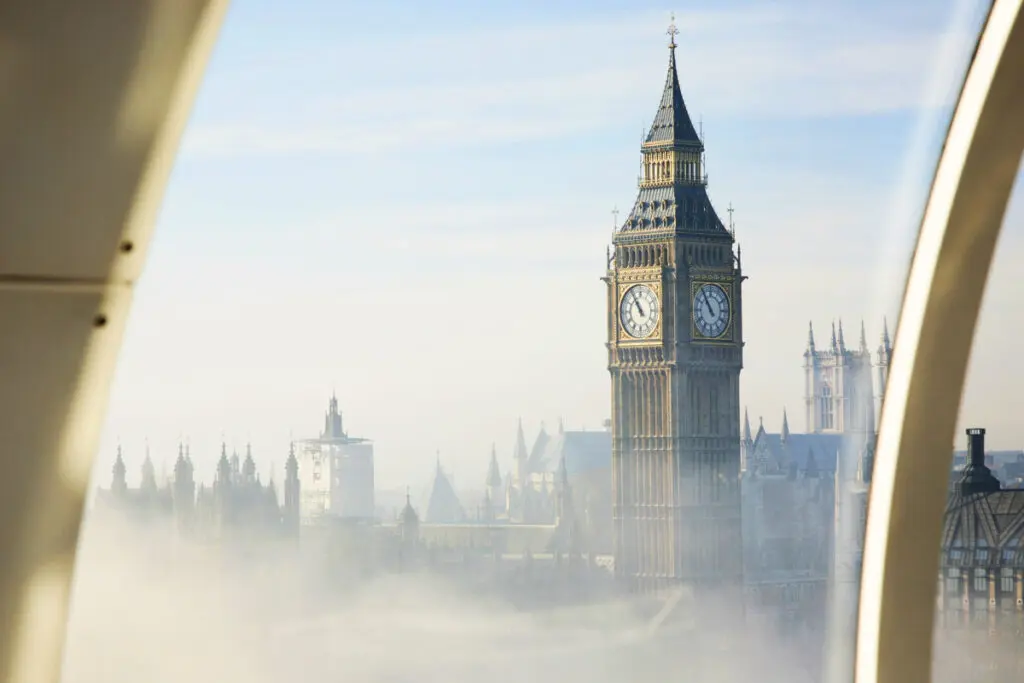
Going up Big Ben is Quite a Workout
The Elizabeth tower has a total of 399 steps. That’s 334 to the belfry, and a further 65 to the lantern above it.
Big Ben’s caretaker and winder must be in good shape!
For a Long Time, Big Ben Lacked Public Conveniences
You came here for interesting facts about Big Ben, and we give you… toilets.
Well, to be precise, the lack of a toilet.
The recent renovations on Big Ben gave the Elizabeth Tower its first ever loo. Previously, anyone working in or visiting Big Ben had to nip to the House of Commons when they needed to go.
Big Ben Went Silent in 2017
Big Ben’s chimes stopped in 2017, but don’t worry, it was planned.
The silence was the first stage in a four-year renovation project which is set to end in 2022. The clock still chimes for special occasions, but not on the hour or quarter-hour as it usually would.
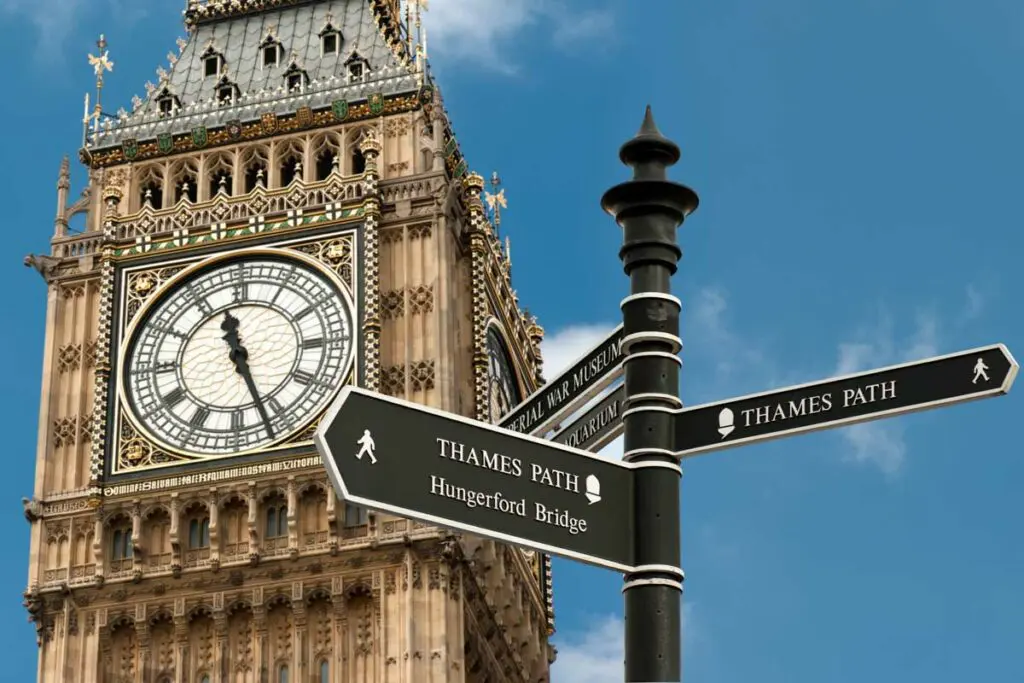
The COVID-19 Pandemic Held up Big Ben’s Most Recent Refurbishment
As if the global pandemic caused enough problems, it forced workers on Big Ben’s flagship refurbishment to down tools in early 2020. This added a year onto the project’s timeline, and is part of the reason that costs are estimated to have reached a whopping £80 million.
You Can Tour Big Ben
At least, you usually can! The Elizabeth Tower has been closed during Big Ben’s refurbishment, but should open again in 2022.
In the meantime, you can still go to talks about the Elizabeth Tower and tour the Houses of Parliament. Along with the Houses of Parliament, Big Ben is usually one of the most popular tourist attractions in the UK.
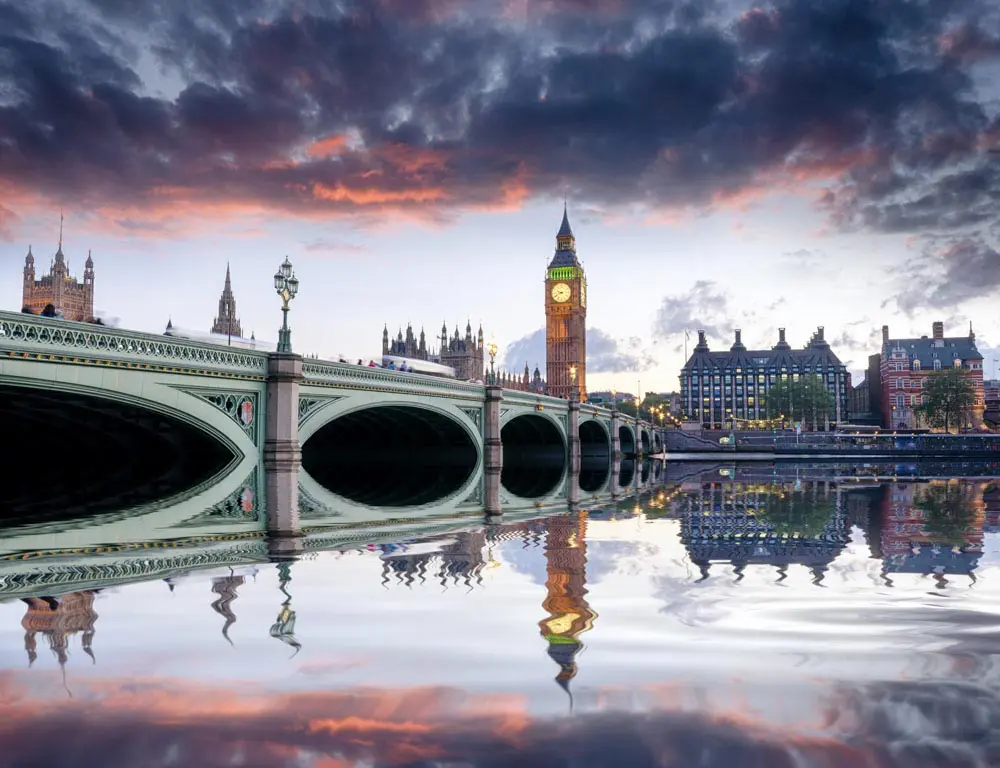
1976 was a Tough Year for Big Ben
This one is less a fun fact about Big Ben, and more a Big Ben tragedy!
In August 1976, a piece of Big Ben’s machinery snapped. The 117-year-old metal had become weak, and gave out in the night.
That would have been bad enough on its own, but once the flywheel snapped it was thrown across the clock room, smashing everything it came into contact with.
Local clock makers, Thwaites & Reed, who had bid for the initial Big Ben building contract but were not awarded it, came and saved the day.
Big Ben began keeping time again in early 1977, and Thwaites & Reed got to become a part of Big Ben’s history after all.
Big Ben’s Clock Faces are Made of Glass
Which is why the last Big Ben fact (the 1976 mechanical failure) was so catastrophic!
In fact, there are 312 pieces of glass in each of Big Ben’s clock dials.
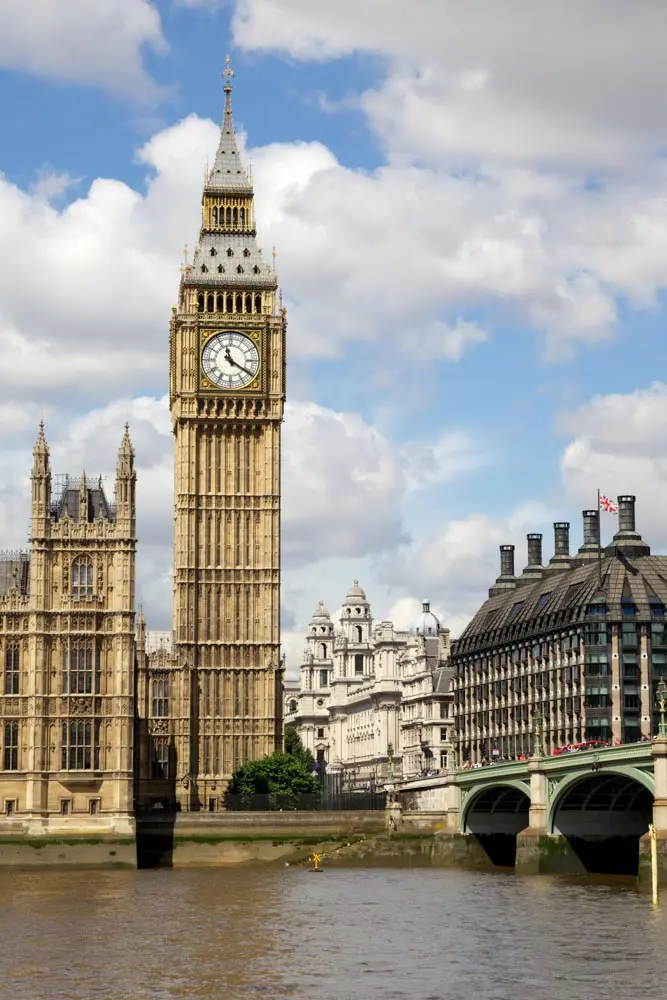
The BBC and Big Ben are Intimately Linked
Big Ben’s chimes were first broadcast by the BBC, or the British Broadcasting Company, in 1923.
You’ll still hear those chimes on the BBC today. They are played before the News, amongst other things.
Big Ben was Once Late Chiming New Year
Although usually extremely accurate, Big Ben has slipped up a couple of times with its timekeeping.
Once, a flock of starlings landed on the clock face’s big hand. They were heavy enough to slow down Big Ben’s mechanism, knocking the clock off time.
And, in 1962, the winter was so cold that Big Ben was late to chime in the new year. Snow and ice were so heavy that December that the clock was once again weighed down, and rang in 1963 a full ten minutes late. That must have been confusing for partying Londoners!
The Hands on the Clock are MASSIVE
Ok geniuses, we hear you say, and you may be warranted in that comment. Clearly the hands on the clock are massive or else you wouldn’t be able to see them from all the way down on the ground. But just how big are they?
Well, the minute hand measures in at 14ft long – more than the length of two adult males, one standing on the other. The hour hand measures in at 9ft long, still absolutely massive, and funnily enough the same length as London’s narrowest house.
Big Ben Isn’t the Only Bell
Nope, we bet you didn’t guess, Big Ben has more than one bell. There are actually four other, much smaller bells that chime alongside the Big Ben. These are called quarter bells and they help make the melody that you hear in the tower’s classic melody.
The Bells Don’t Swing
We often have the image of some big bell swinging back and forth as it rings but Big Ben and its four quater-bells are actually fixed in place. They’re struck by a massive swinging hammer to make them chime.
The Clock Wasn’t Designed by a Clockmaker
Here’s an interesting Big Ben fact for you. The clock was not designed by a clockmaker – technically. In fact, the first designs were made by a clockmaker called Edward Dent, but the plans were changed so much over the construction of the clock that Edmund Beckett Denison, the man who made the changes became credited as chief designer.
Denison was actually a lawyer and to double down on the interesting, he never patented his designs, meaning anyone is free to copy them to this day.
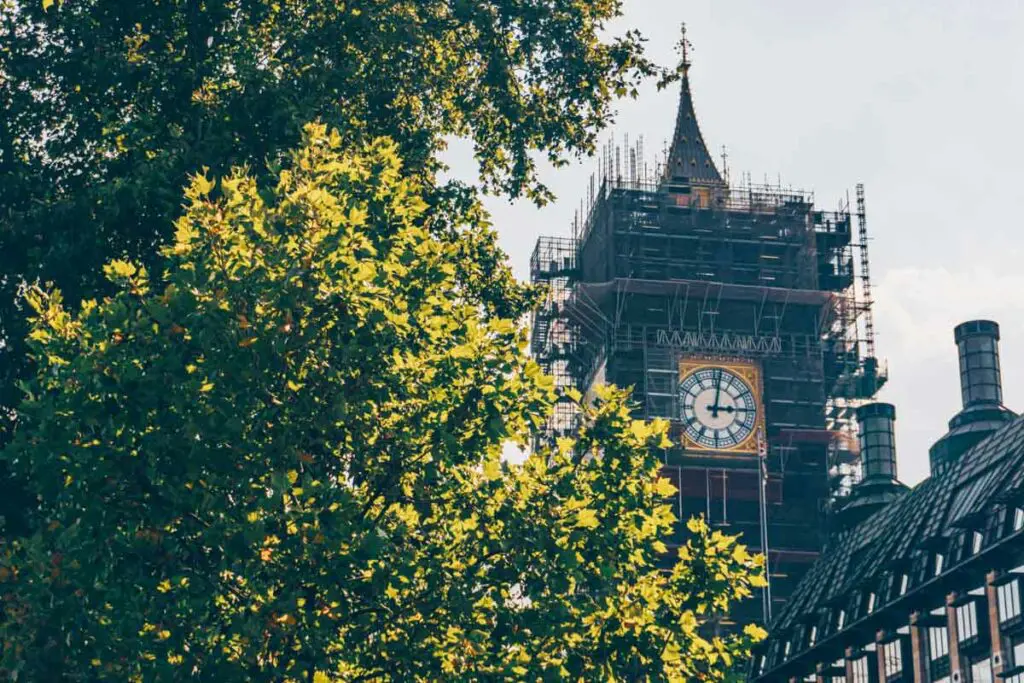
There we are, 25 (mostly) fun facts about Big Ben. And they’re all interesting!
Hopefully you’ll be ready for any surprise Big Ben questions, or London Landmark pub quiz rounds after reading them.
We certainly feel like Big Ben boffins at London x London. Now, who can we go and impress with our knowledge of a large, famous clock?

